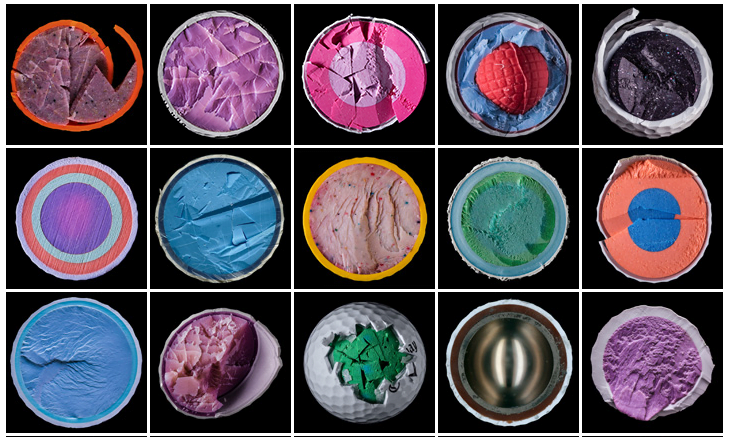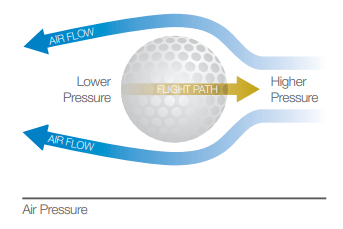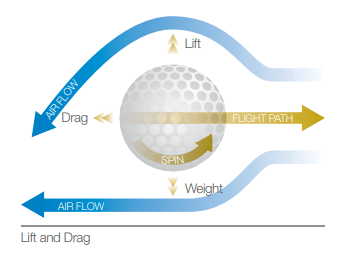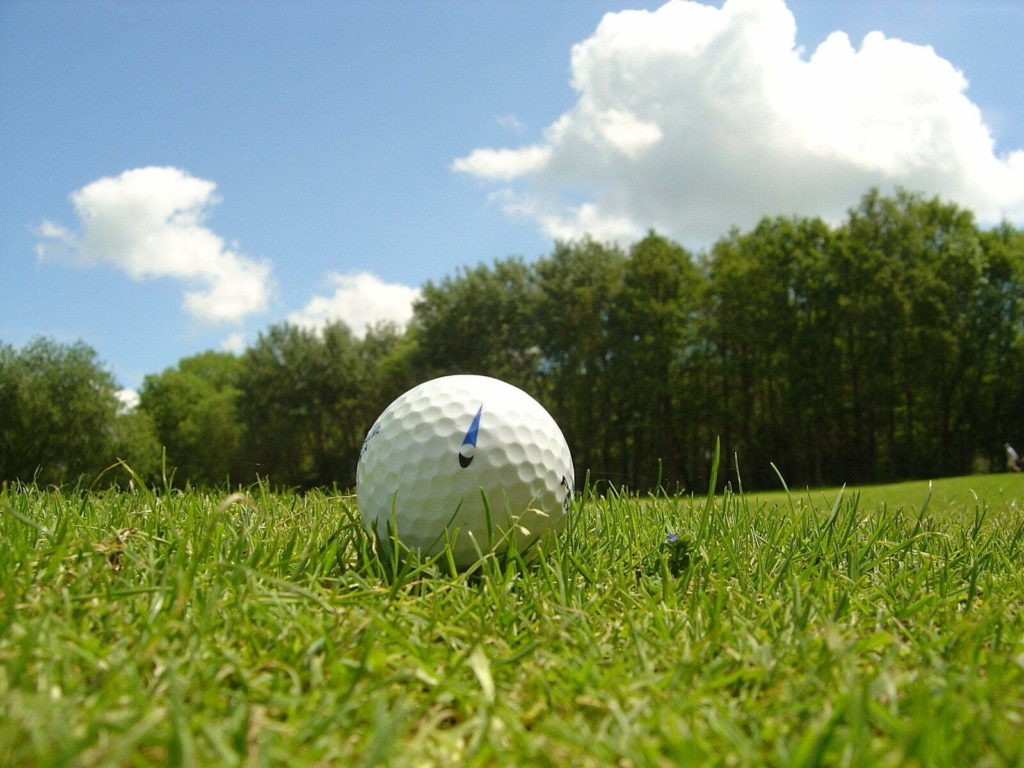Golf balls. It is perhaps one of the most recognizable designs in all of sports. A simple golf ball is a small sphere, about 1.68 inches or bigger, and it has a great deal of valleys or dimples on the surface.
Table of Contents
What Makes it Distinctive from Other Balls in Sports?
What makes the golf ball so unique is not only its small shape but its many little impressions or dimples on its surface. Before delving into its technology, it is imperative to note that these hollow dents are more than just aesthetic characteristics that add to the mystique of golf, as they are essential to a golf ball’s flight.
In basic scientific terms, golf balls have dimples to lessen wind resistance or aerodynamic drag. The idea is that when you reduce these facets, you can make golf balls go significantly farther.

Photo courtesy of James Friedman
A Brief History of Golf Balls
Early golfers used to play with smooth golf balls, only to realize not long after that the more they hit the ball, the farther it would go. The explanation behind that was because the ball’s surface would get scuffed as players continuously hit it, they figured why not make the impressions or the dimples permanent to maintain the consistency in distance.
Furthermore, as a golf ball flies through the air, the air flow interacts with its surface, greatly impacting the amount of drag. You can think about it this way: the wind is hitting the golf ball’s surface, pushing against it in the process, and then wrapping around effectively thanks to the dimples.
The Science Behind Golf Balls, Air Flows, and Dimples (or the Lack Thereof)
So, what happens then if a golf ball is smooth? A simple description would be that the air flowing closest to the exterior of the ball would follow the flow of air around it, ultimately producing a detached air flow behind it.
As wind flows around a smooth golf ball, it becomes disconnected, in a sense that the air nearest to the surface would not stick to it, but rather the fast-moving flow around it. The detached airflow causes a weight to deform behind a smooth ball, which then creates a low-pressure zone. This area, in turn, causes drag. That is practically like a vacuum sucking the ball back and slowing it down in the face of the wind.

Adding dimples to the ball changes how the air flows over it. As the air breezes through the dimples, a small pocket of turbulence or air disturbance, is produced on the surface. The wind then attempts to go in, detaches and reattaches to the next indentation, generating proper turbulence for a better flight.
So, instead of impeding the golf ball’s flight, the tiny pockets of turbulence allow the closer layer of air to travel tighter around it. In hindsight, it is simply just mixing and bringing closer the surrounding high-speed air to the ball, so the airflow can remain attached to it.
A more attached airflow, then creates a smaller way, which in turn produces a smaller low pressure zone and lesser drag. Indeed, even this slight change can have a major effect on a golf ball’s flight.
The Bernouli’s Principle Application
A golf ball with dimples will go twice as far as a golf ball without. Additionally, these impressions help the flight quality of the ball by influencing the lift as the ball rotates through the air.

Lift force is the result of a concept in aerodynamics known as Bernoulli’s Principle. It states that as the speed of the airflow is increased, the pressure of the airflow on the ball is decreased, producing significant lift. This, in essence, is another important factor in golf that is often overlooked by beginners. With Bernoulli’s Principle in play, the lift of the golf ball is more pronounced due to the dimples on it, which measure only 15 hundredths of a millimeter.
Are Golf Balls Regulated by the USGA?
Even though the effect is already tested and proven, the United States Golf Association (USGA) does not regulate golf ball dimples. This means that you can have any number of indentations on the golf ball, and you can even have it in any shape. What USGA measures is the actual effects of dimples.
These effects are tested and measured at the USGA’s 70-foot indoor test range in Far Hills, New Jersey. Golf balls are launched through a series of sensors at speeds of upwards of 190 miles per hour. These top-of-the-line infrared sensors minutely track the trajectory of the golf ball. They do it with such precision that they can accurately figure out how much aerodynamic lift and drag force each type of dimple pattern produces.
In Conclusion
It is somewhat amazing to think how these small intricacies have huge implications on how the game of golf is played. At the end of it all, while dimple sizes, shapes, and effects may differ, they remain—in their own right—vital aspects of all golf ball design.

